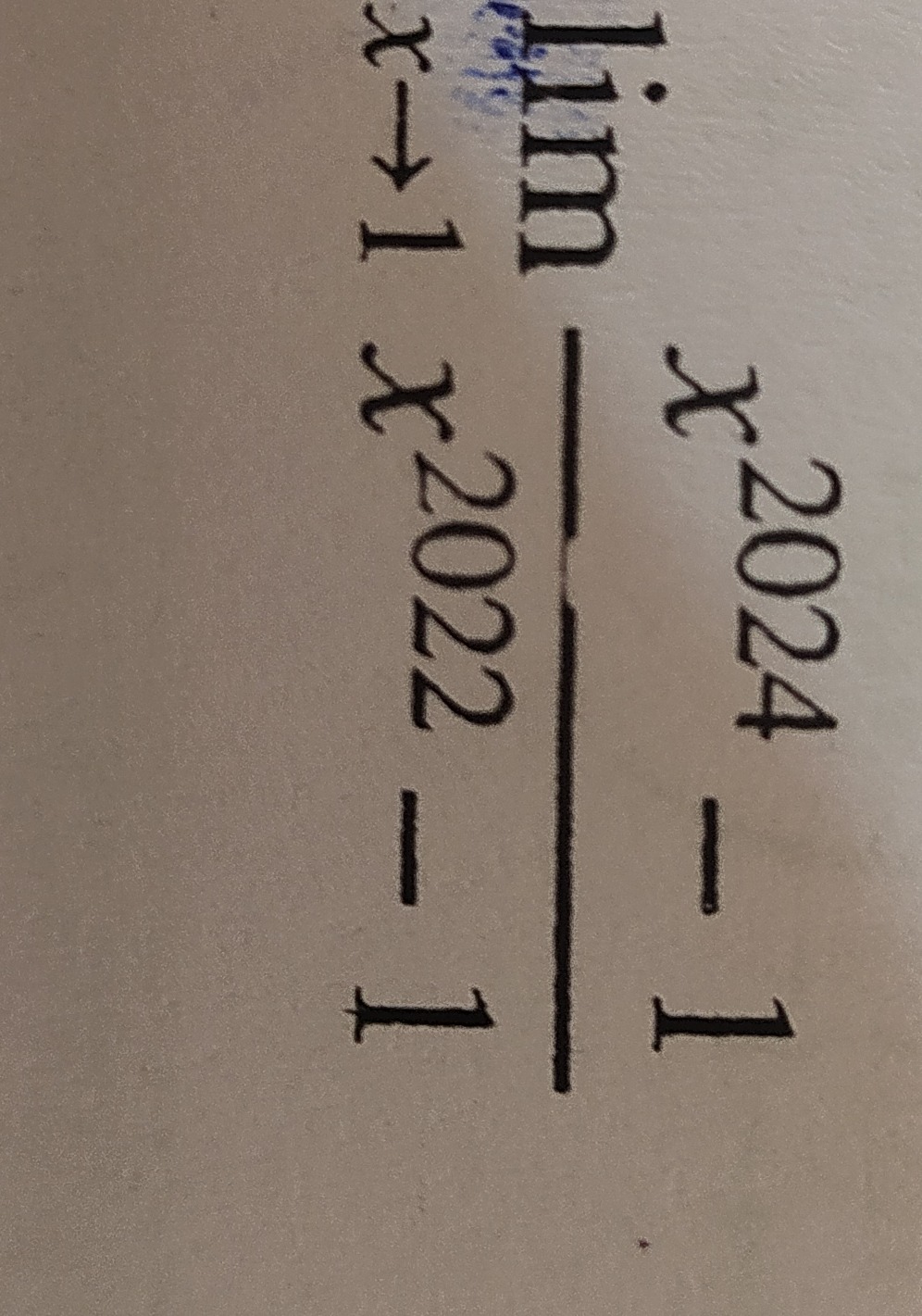Question
Question: $\lim_{x\to 1} \frac{x^{2024}-1}{x^{2022}-1}$...
limx→1x2022−1x2024−1

Answer
10111012
Explanation
Solution
The given limit is of the indeterminate form 00 as x→1. We can evaluate this limit using L'Hopital's Rule or by algebraic manipulation.
Method 1: L'Hopital's Rule
Applying L'Hopital's Rule, we differentiate the numerator and the denominator with respect to x:
x→1limx2022−1x2024−1=x→1limdxd(x2022−1)dxd(x2024−1)=x→1lim2022x20212024x2023Now, substitute x=1:
2022(1)20212024(1)2023=20222024=10111012Method 2: Algebraic Manipulation
We can factor the numerator and denominator using the difference of powers factorization: an−bn=(a−b)(an−1+an−2b+⋯+abn−2+bn−1).
x2024−1=(x−1)(x2023+x2022+⋯+x+1) x2022−1=(x−1)(x2021+x2020+⋯+x+1)Substitute these factorizations into the limit expression:
x→1lim(x−1)(x2021+x2020+⋯+x+1)(x−1)(x2023+x2022+⋯+x+1)Cancel the common factor (x−1) for x=1:
x→1limx2021+x2020+⋯+x+1x2023+x2022+⋯+x+1Now, substitute x=1 into the simplified expression. The numerator has 2024 terms, each equal to 1. The denominator has 2022 terms, each equal to 1.
20222024=10111012Thus, the limit is 10111012.
